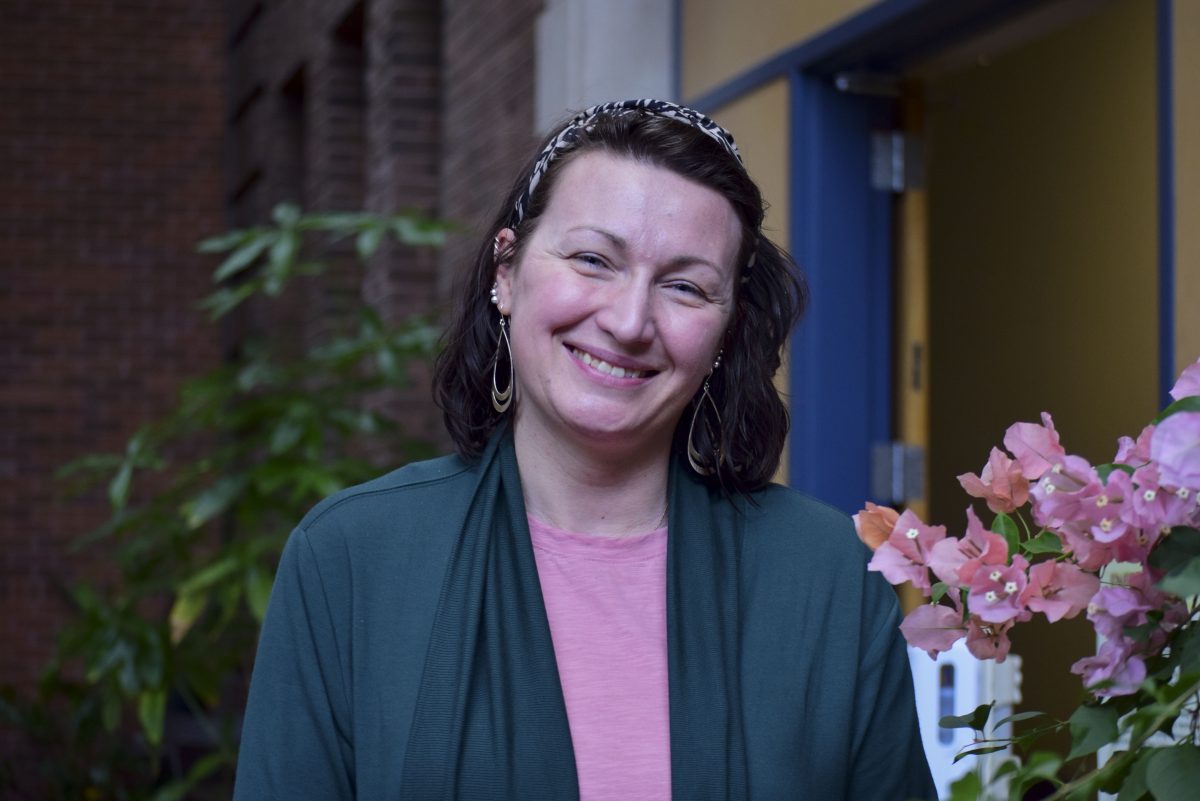For almost a century, tattered books brittle from years of use would arrive on the doorstep of a Como Avenue Southeast building. Book binders would go to work cutting, reshaping, sewing, gluing and reconstructing volumes to be used by students and faculty. But earlier this month, after 93 years of helping maintain the University of Minnesota libraries, the University Bindery closed its doors. The University library system has been increasingly shifting toward using digital versions of the paper journals and books that comprised the majority of the binderyâÄôs work, and a dwindling workflow caused the binderyâÄôs role to become obsolete and unsustainable. Now, the majority of the schoolâÄôs binding needs will be outsourced to a company in Indiana, and thesis binding services will be shifted to local printing services. Marc Flechsig, the Bindery manager, said signs of an impending close had been apparent for the past 10 years. âÄúLess paper meant less binding,âÄù he said. âÄúThe signs had really been there for about three years, and we had known about a year ago that it would be closing.âÄù The Bindery opened on July 1, 1922, but it was nearly three months before it received adequate supplies to begin working on an estimated $20,000 worth of books âÄî nearly $285,000 in 2015 when adjusted for inflation âÄî that needed to be bound. The initial hiccup in supplies didnâÄôt stunt the growth of the Bindery, though, and by 1938, the number of books bound each year was about 17,000, up from about 3,500 the year it opened. Mary Miller, director of collection management and preservation for the University libraries, said the BinderyâÄôs early and rapid growth forced it to move to a larger space in Walter Library in order to accommodate its needs. Business was good for the Bindery for the next 50 years, but in the early âÄô90s, digital media started eating away at its work. In 1992, about 80 of the countryâÄôs biggest research institutions spent about 3.6 percent of their budget on average on digital media, according to an Association of Research Libraries Statistics report. Eighteen years later, the average library digital expenditures ballooned to about 65 percent in the 113 schools surveyed that year. Charles Spetland, collection development associate librarian for the University libraries, said those numbers are on par with the shift at the University. As the work slowed, the Bindery did its best to fulfill essentially any request the University libraries had, even if they were unconventional Flechsig said. âÄúWe were like a boutique for the University,âÄù he said. âÄúBut it eventually became unsustainable.âÄù The Bindery was well known for its thesis binding and served students from other schools in the area, like St. Catherine University and the University of St. Thomas, Flechsig said. Miller said the BinderyâÄôs industry innovations established the service as a leader in the field. In the 1930s during the Great Depression, the Bindery employed workers through the Work Projects Administration that was created as a part of the New Deal to help unemployed Americans, Miller said. In the 1980s, the Bindery partnered with scientists to develop the best glues and papers to use for preservation, she said. Soon after, the Bindery began working to reformat and reproduce deteriorating books in order to preserve the information. That work was the first of its kind by a bindery in the U.S., Miller said. Beth Pyper-Holz, who worked at the bindery for 10 years, said the closing of the bindery was bittersweet. âÄúWe walked away from the situation feeling really appreciated for the work we had done,âÄù Pyper-Holz said. She said she started the job not knowing anything about book binding, but loved the hands-on work and the uniqueness of the bindery. The job was difficult at times but fulfilling, and the four-member staff worked together on most of the binderyâÄôs projects, she said.
Moving away from print.
Spetland said digitalization has been a trend in all major research universities, and the University is no exception. He said the databases the University subscribes to started to move toward digital versions nearly 15 years ago, and many journals had a print and online version by 2000. In 2007, the University went completely digital for the majority of their resources, Spetland said. He said the University will still order print copies of any of their materials if the change in medium makes the material harder to understand or if there is something lost in the conversion process. With the University bindery now closed, the University of California, Berkeley is the only remaining school with its own bindery in the U.S., said Michael Foley, the schoolâÄôs bindery director. The bindery in Berkeley serves 10 different California colleges with over 38 million volumes of books, which should provide enough work to support an in-house bindery, he said. Still, Foley said the amount of work has decreased. He said he believes with the closing of many small binderies across the country, a part of history is lost. âÄúWhat has happened is [libraries] are overlooking the preservation of their print collection,âÄù Foley said. In the future, libraries might have to reassess how they preserve books to keep their collections intact, he said. âÄúThe supplies we use can last hundreds of years,âÄù Foley said. âÄú[Bindery services exist] to make sure that the items are durable and permanent.âÄù Pyper-Holz now works for the UniversityâÄôs Mayo Digital Print Center, and although she enjoyed the Bindery, she said she welcomes the change of pace. âÄúI really enjoyed working there, but it was very labor intensive on your hands,âÄù she said. âÄúBut the creativity of it and the uniqueness of the operation made it an experience I am really glad that I had.âÄù










